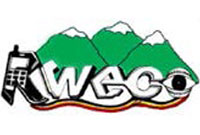Mandate:
The Production department is responsible for promoting food and nutrition security and improving household incomes through coordinated interventions that will enhance sustainable agricultural productivity and value addition, provide employment opportunities; and promote agribusiness, investment and trade (National Agricultural Policy 2013).
The department is head by Baluku Julius the District Production Officer contact 0772624683 who works with a very committed team that include;
Rukara Julius the Principal Agricultural Officer 0772382421
Kithaghenda Erisania , District Fisheries Officer
Kabugho Sylivia , Senior Fisheries Officer ,0782866765
Sectors under Production ;
Agriculture
Veterinary
Fisheries
Entomology
Situation analysis.
Land size:
Kasese District has total land size of 3,389 sq kms, and about 63% of this land ( 1834.6 sq.km) is occupied by conservation areas. Arable land is about 1,555 Sq Km. Average land holding per household stands at 1 acre, with about 71% of the farmers being subsistence.
The district receives 2 rainy seasons: March April May (MAM) and September October November December (SOND)
key value chains in the district include;
Cotton, with the participation of about 32000 farmers . The current productivity stands at an average of 450 Kgs /acre. However, there are farmers who produce up to 1000 Kgs/acre, with good management
Coffee 85% of the farmers in Kasese are engaged in coffee production. 80% of these are engaged in Arabic coffee and 20 % are engaged in Robusta coffee production. About 250,000 tons of coffee, which translate into 417,000 – 60kg bags are produced annually. In FY 17/18, coffee from Kasese contributed 9.2 % of the coffee exports.
Maize About 40,000 farmers participate in maize production in the district who cultivate 1500 acres on average. AverageAverage productivity stands at 800kg/acre and in a good season, about 100,000 tons of Maize are produced per season.
Matoke 23,006 Households are engaged in Matooke growing. This is however, not a commercial crop in the district. Majority of the farmers use Matoke for home consumption
Other value chains are ; Rice, livestock and Fish. Food crops include Beans, Bananas and some Cassava.
Other emerging enterprises are ; vanilla and cocoa.
Livestock
The livestock industry in Kasese is dominated by traditional cattle keeping farmers who mostly graze on community owned land. There are about 17,000 livestock (cattle and goat) farmers across the district. The cattle population (both local and improved) in the district is estimated at 88,000 of which only 1,300 or 7.2% is improved breed.
The district has 14 operational milk coolers, with total capacity of 29,400 liters. Average daily Milk collection in the dry season stands at 4,135 litres and in the wet season it stands at 4,930 liters.
Milk production is still generally low with the district only producing about 72,000 litres annually at shs. 1,400 per litre. About 2000 cows are sold per month and 95% of them are exported to DRC. Out of these, only about 5% are from the farmers in the District, 95% come from outside the District.
Fisheries.
There are 6 landing sites in the district whose annual production stands at 540 tones. There are about 300 fish ponds whose annual production stands at 2 tones.
We have other programs through which we deliver to the community and these are ;
The Uganda Multi-Sectoral Food Security and Nutrition Project ( UMFSNP) which is for promoting production and consumption of micronutrient- rich foods through working with Primary schools and parents groups .
Agriculture Cluster Development Project ( ACDP) which is designed to promote the production of Maize and Coffee, where farmers are supported to access critical farm inputs such as Seeds, Fertilizers, Herbicides and Insecticides through an e-voucher system.
Partners
SNV Netherlands
Save the Children














